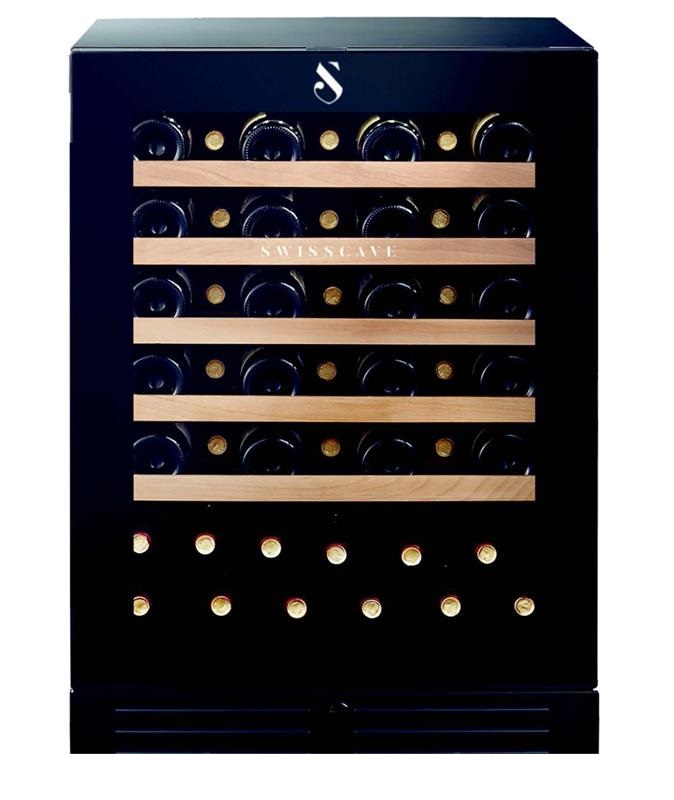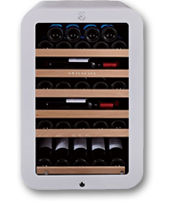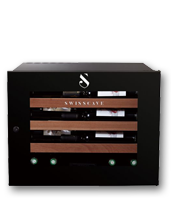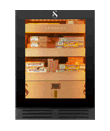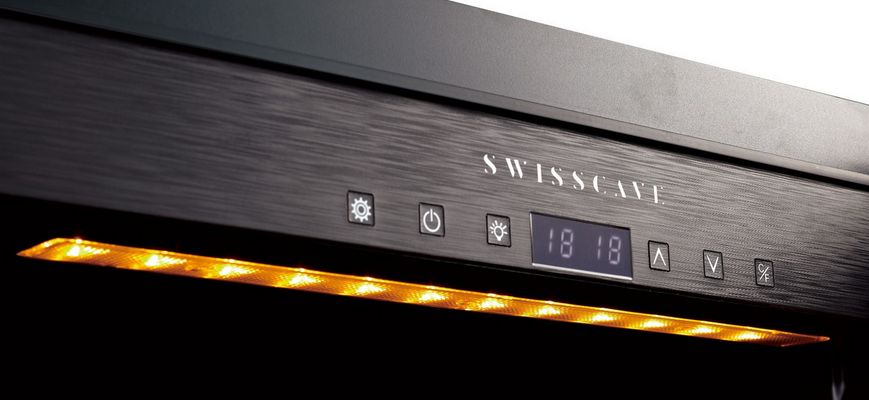
Quality Features
Years of experience and practice tests have laid the foundation for SWISSCAVE‘s design and make up. A different type of product. Functionality, which can withstand the stress of everyday use. Efficiency, which is reflected not just in the energy consumption, but also in its very reasonable price.
Over the years, in exchange with long-time wine lovers, experts and winemakers, we have gathered all the experience in the field of wine storage and temperature control and have thus been able to bring a top-class wine cabinet to series production.
To understand SWISSCAVE’s purpose, it is important to understand what was missing before. Over the years, a group of long-time wine aficionados had used a number of products for wine storage and temperature control, including well-known, expensive names. Their experiences can be summarized as follows:
- It was impossible to position two layers of bottles behind each other on the shelves, except perhaps the short Chianti bottles. In most cases it was only possible to put in a single line of bottles. So the storage area in a large cabinet 180cm high went down to about 100 bottles (instead of 200+).
- If you tried to put two bottles behind each other, it was almost inevitable that one of the bottles would touch the back wall of the cabinet and get icy, resulting in tartar (quality loss). Also the labels grew wet and mouldy, or even came off.
- Some cabinets actually became wet inside, particularly at the bottom, meaning that not only did the corks grow mould, but the labels also fell off the bottles.
- Champagne, Magnums (1.5L) or even 3 litre bottles were often impossible to accommodate because the spaces were too narrow.
- A lot of closets had did not have pull-out racks, but only fixed shelves. Some others did have pull-out racks, but rather than being placed on steel bearings, they were dragged along a guide rail. If, for example, 12 bottles were placed on a sliding shelf, it often failed to pull out very far, or it needed to be pulled so abruptly that the bottles would fall off when the drawer was pulled out.
- There were other cabinets that pulled out smoothly but which would roll out on their own as soon as you opened the closet, so that the cabinet threatened to tip forward.
- Some cabinets had chrome shelves which began to rust after a few years.
- Others had only a few shelves inside, meaning that you had to cram 30, 40 or even 50 bottles onto a shelf. This then led to the trays bending so strongly over time that they would fall through it, plunging the wine to the floor. Furthermore, finding the wine you want from the 40 or 50 bottles on the shelf always was a time-consuming endeavour, and it was easy to forget which wines were still lying back there.
- Then there were the ‘low-cost’ wine cabinets, which used a kind of heat exchanger which stopped working after about 3 years (usual life span of heat exchanger coolers).
- Many of the cabinets were built cheaply with plastic handles and door frames that warped over time. They also were opulently furnished with plastic visors, which looks as high-quality as a common freezer from the discount store next door. This was true in some cases even with exclusive brands in the upper price range.
- Then there were the wine coolers, with noise levels of 45/,50+decibels, (comparable to the noise of a passing car in town).
These few a few of the experiences that eventually led to the definition of a functional system which meets the demands of real operating conditions for perfect quality wine storage: the birth of SWISSCAVE.


